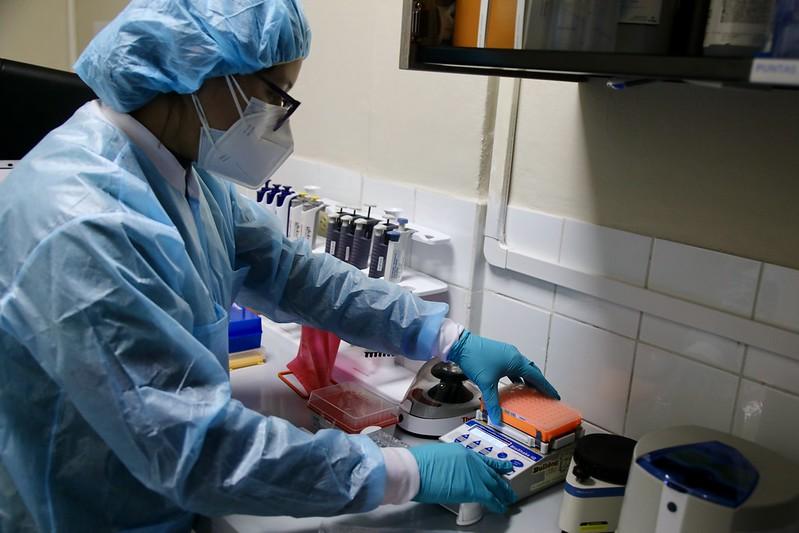Due to its rapid growth and potential to add to the respiratory virus burden in Northern Hemisphere countries, the World Health Organization (WHO) today designated JN.1, part of the BA.2.86 SARS-CoV-2 lineage, as its own variant of interest.
The announcement came following an assessment from the WHO's Technical Advisory Group on SARS-CoV-2 evolution.
Rapidly rising JN.1 proportions
JN.1, first detected on August 25, contains L455S mutation in the spike protein, compared to the parent BA.2.86 variant. The mutation is thought to enhance JN.1's immune-evasion capabilities. The WHO had first designated BA.2.86 as a variant under monitoring in August, then in late November upgraded it and its offshoots, including JN.1, as a variant of interest.
Over the past month, the proportion of JN.1 viruses has rapidly increased, rising from 3.3% in early November to 27.1% by early December. Countries reporting the highest proportions include France, the United States, Singapore, Canada, and the United Kingdom.
The WHO said its Western Pacific region saw the biggest jump in JN.1 proportions. Singapore is experiencing a record surge in COVID-19, which prompted a health ministry statement strongly urging people to wear a mask, according to a media report.
In its last variant proportion update on December 8, the US Centers for Disease Control and Prevention (CDC) singled JN.1 out from BA.2.86 tracking, noting a dramatic jump in JN.1 detections over a 2-week period: from 8.1% to 21.4%. JN.1 levels were second only to HV.1, part of the XBB.1.9.2 lineage.
Yesterday, scientist and infectious disease modeler J. P. Weiland projected on Twitter (now X) that, based on wastewater tracking, JN.1 will become the dominant variant within a week, with nearly 1 million infections reported each day.
Impact and protective measures
The WHO said JN.1 doesn't appear to cause a higher public health risk than other SARS-CoV-2 variants, but it warned that it could trigger a surge in COVID-19 alongside rises in other viral and bacterial infections, especially in countries entering their winter seasons—a combination of factors that would worsen the respiratory disease burden.
The WHO said JN.1 appears to have higher immune-evasion properties than the BA.2.86 parent virus. The agency added that, despite some reduction in JN.1 neutralization, evidence so far suggests that the monovalent XBB.1.5 vaccines are likely effective, and scientists around the world are actively monitoring the impact of the vaccine.
Wastewater tracking from multiple countries approaching their winter seasons suggests a large wave of community infections, but so far, without major pressure on healthcare systems, despite significant cocirculation of other respiratory pathogens, such as seasonal flu, respiratory syncytial virus (RSV), and childhood pneumonia.
The WHO recommended universal masking in health facilities, with appropriate masks, respirators, and other personal protective equipment for health workers caring for patients who have suspected or confirmed COVID. The group also urged improved ventilation for health facilities.
The WHO urged people to use all available tools to protect themselves from infection and severe disease, such as wearing a mask in crowded or poorly ventilated areas, practicing respiratory etiquette, staying updated with COVID vaccines, staying home when sick, and testing when symptomatic or following exposure.

















